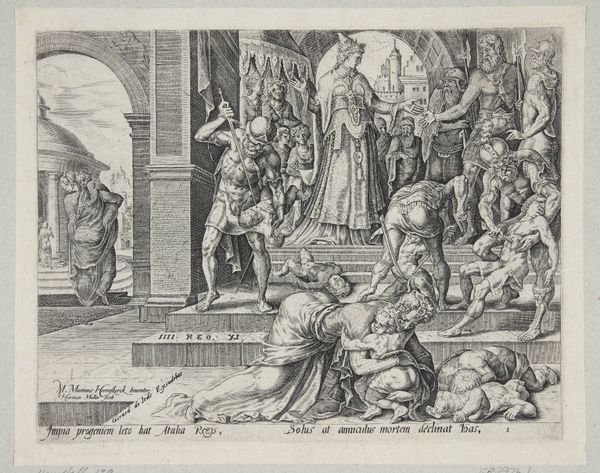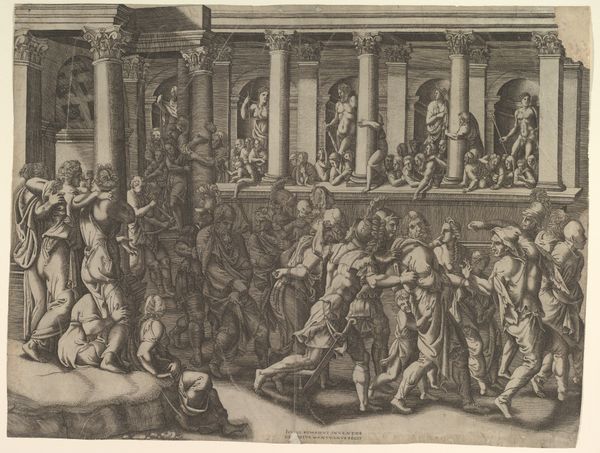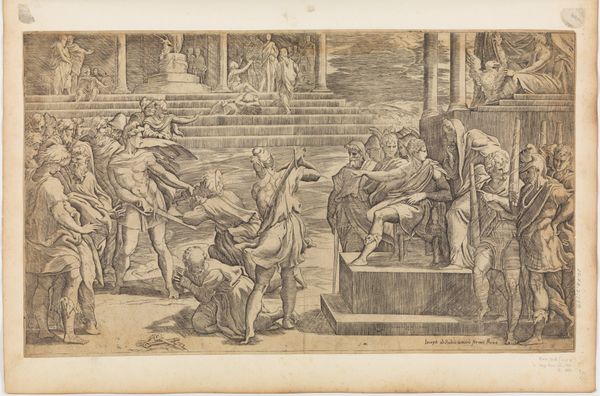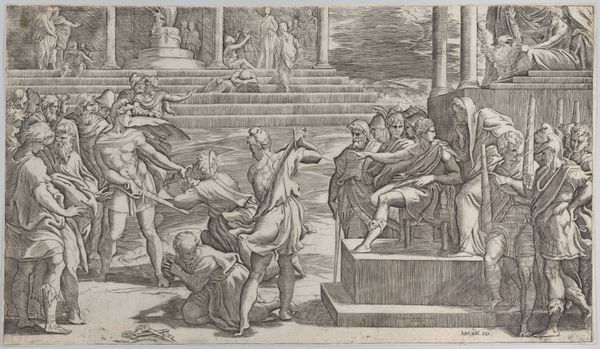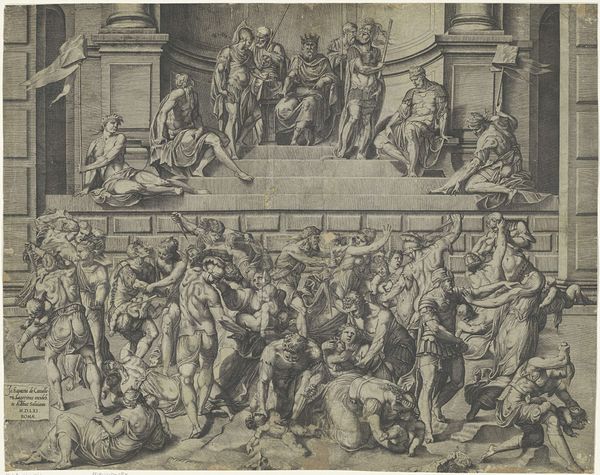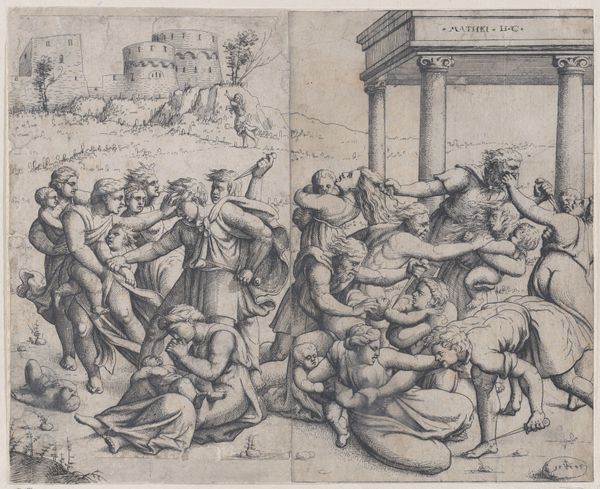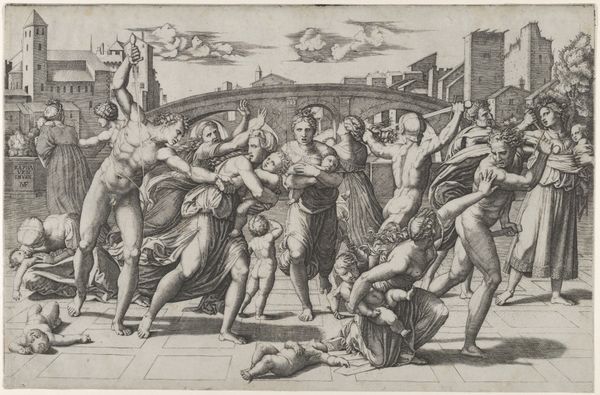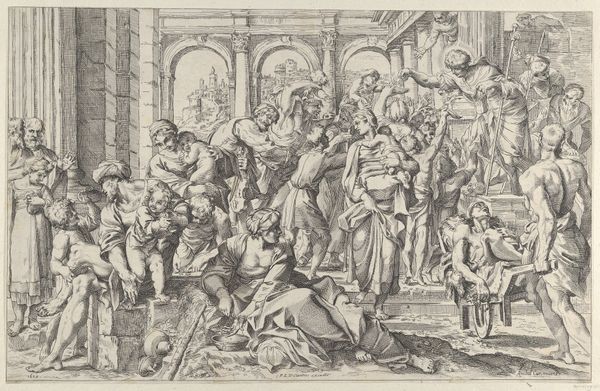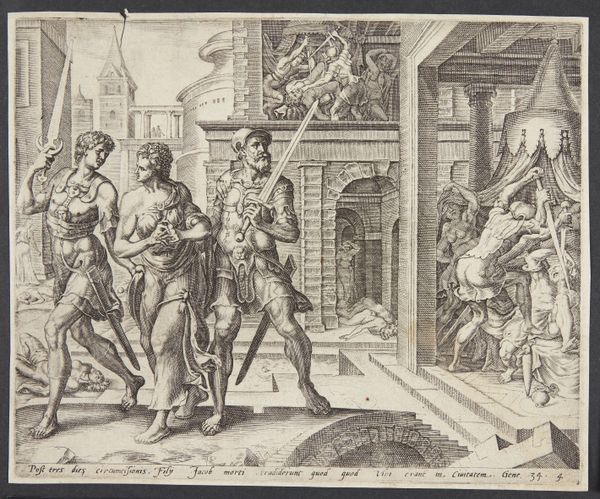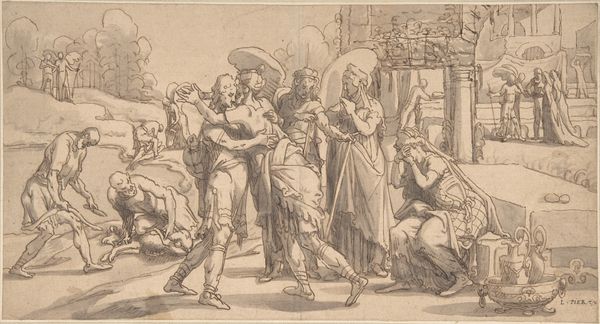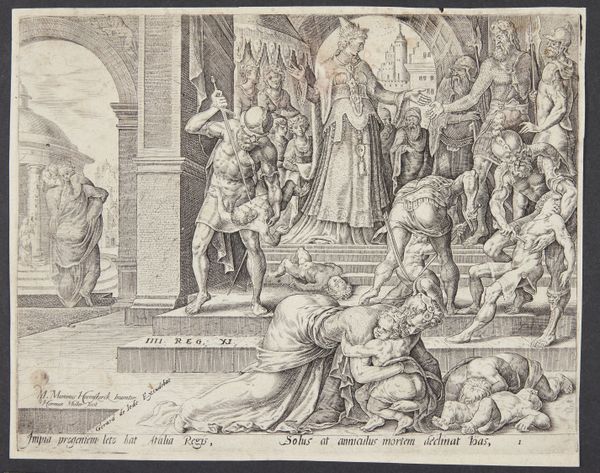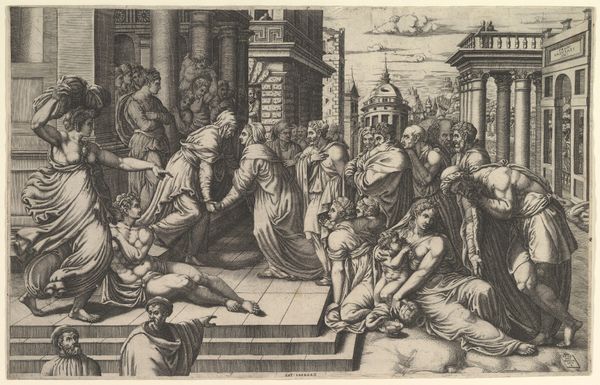
drawing, print, ink
#
drawing
#
narrative-art
# print
#
figuration
#
11_renaissance
#
ink
#
pen work
#
history-painting
Copyright: National Gallery of Art: CC0 1.0
Editor: Jean Duvet's "The Judgment of Solomon," created around 1516 using ink, presents a dramatic narrative scene. There's such intensity packed into this relatively small print! I'm struck by how Duvet captures the raw emotion of the moment. How do you interpret this work, considering both the story and the artistic choices? Curator: Ah, yes, Duvet. He doesn't just depict the biblical story, he *becomes* it, channeling the conflicting emotions of justice and desperation. Look at Solomon himself – the gesture of his hands, seemingly commanding but almost pleading, as if *he's* wrestling with the decision! This print reminds us that Renaissance artists weren’t simply illustrating stories; they were dissecting the human condition through them. It's as if Duvet wondered if *we* could live with this level of absolute power. Editor: That makes me see Solomon’s character in a completely different light, from powerful king to struggling human being. Does Duvet use the visual elements to lead our eyes to particular emotional aspects of the story? Curator: Exactly. Your eyes dance between the still, small body of the infant and the wildly gesturing figures around him, including what look like rather grotesque figures flanking the throne. Duvet masterfully uses pen work, or maybe madness, to portray the most unnerving sides of humanity! The closer I look, the less sure I am about what Duvet himself believed! Editor: It is such a turbulent image; it seems impossible to truly reconcile. Thanks for pulling out so much to think about! Curator: My pleasure. Remember, art whispers its secrets to those who listen closely and without expectation. I feel I am still learning from Duvet.
Comments
No comments
Be the first to comment and join the conversation on the ultimate creative platform.
